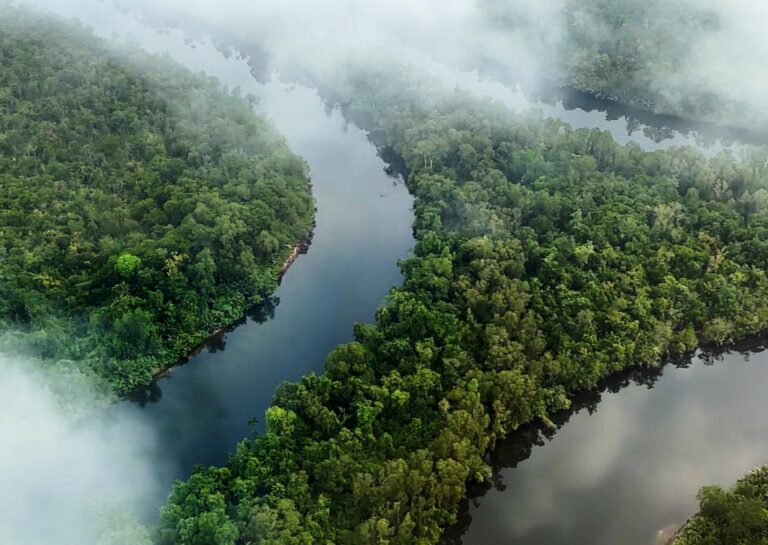SOUTH-EAST Asia’s carbon market has the potential to generate a cumulative revenue of between US$946 billion and US$3 trillion over the next 25 years until 2050, if it sets the right policies to unlock these opportunities, according to a recent report.
The revenue would come from a variety of carbon projects potentially worth up to US$267.7 billion by 2050, according to the report authored by carbon markets platform Abatable, the Asean Alliance on Carbon Markets, and an Indonesian-focused consultancy Equatorise.
Projects aiming to curb deforestation under the United Nations (UN)’s reducing emissions from deforestation and forest degradation (Redd+) framework could have a potential value of US$27.8 billion, while blue carbon projects – which refer to carbon stored in coastal ecosystems – could be worth up to US$95.9 billion.
The remaining US$144 billion could potentially come from biochar projects – which refers to storing carbon in soil – a novel project type that Asean may look to develop, said the report.
It is estimated that these various carbon projects could, in total, reduce emissions by more than 1.1 billion tonnes of carbon dioxide equivalent every year by 2050, and create 13.7 million jobs within these new green industries.
Types of carbon projects
Asean countries are naturally endowed with abundant carbon stocks (referring to the amount of carbon stored in a habitat) and therefore have a lot of potential to supply carbon credits through nature-based projects.

Friday, 12.30 pm
ESG Insights
An exclusive weekly report on the latest environmental, social and governance issues.
Around 47 per cent of the region’s total land area is covered by forest ecosystems, although research has found that some 610,000 km2 of forest – more than half of its original forest cover – has been deforested between 2001 and 2019. In addition, Asean has around 35 per cent of the world’s mangrove forests.
“There are therefore significant opportunities for Asean to look to expand Redd+, afforestation, reforestation and revegetation (ARR), and blue carbon projects to protect and expand forests and marine ecosystems,” the report said.
Given that Asean countries are among the largest global producers of rice in the world – with about 195.5 million tonnes of rice produced in 2022 – there are opportunities for soil carbon and agroforestry projects to reduce emissions in this sector.
This also opens up room for the region to develop carbon credit methodologies that focus on the reduction of emissions from rice production, which are gaining prominence in the market.
The report added that nature-based projects tend to produce significant additional benefits, as local communities within the project boundaries can gain employment, have their homes protected through additional ecosystem services, and benefit from social initiatives around the project.
“Nature-based projects can also play a significant role in protecting and restoring biodiversity, which is crucial to Asean as three of the 17 megadiverse countries in the world are located in the region – Indonesia, Malaysia and the Philippines,” added the report.
Another potential area for the region to generate carbon credits is through the closure of coal power plants before their original retirement.
Known as transition credits, they present an avenue to finance the early closure of coal plants and their replacement with renewable energy so that plant owners would be able to recover their revenue loss.
The Monetary Authority of Singapore and several partners are studying the viability of using transition credits to shut down these plants.
The report noted that Asean also has potential in developing biochar projects, given the region’s abundance of forests, rice husks and palm. Biochar is created from agricultural or forestry residues and then fed back into soil to facilitate carbon removal from the atmosphere.
Biochar also has added benefits of improving soil health and reducing fertiliser usage, therefore offering a circular solution for many Asean countries to reduce both agricultural waste and emissions, as well as improve agronomic productivity.
With projections that global demand for voluntary carbon credits will reach 1.2 billion tonnes of carbon dioxide equivalent annually by 2030 and 5.4 billion tonnes every year by 2050, the report noted that Asean countries “are in a good position to utilise their natural endowments to meet this expected growing demand and be compensated for this”.
The region is not new to the voluntary carbon market, and has in fact been an active supplier of carbon credits to the market.
The report estimated that projects in South-east Asia have generated carbon credits corresponding to the reduction or removal of 233 million tonnes of carbon dioxide equivalent between 2009 and 2024 – representing 7 per cent of global issuances in total.
This is estimated to have brought about between US$466 million and US$1.2 billion of revenue to the region.
Indonesia, the seventh-largest global supplier of carbon credits since 2009, and Cambodia, ranked 10th, have dominated historical supply.
Their supply provision is dominated by Redd+ projects, while other Asean members have been large suppliers of renewable energy and cookstove projects.

Challenges and policy recommendations
However, there are challenges limiting both the supply and demand of carbon credits, preventing Asean from achieving its revenue potential.
The report made several policy recommendations for Asean governments to consider.
It noted a need for clear and detailed regulations, such as properly defining the role of the voluntary carbon market in achieving a country’s national climate targets, as well as developing processes and mechanisms for the international transfer of carbon credits under Article 6 of the Paris Agreement.
At the recently concluded UN COP29 climate summit, countries adopted standards governing international carbon trading rules covered under Article 6.4 of the Paris Agreement. Article 6.2 governs the bilateral trading of carbon credits.
“This would enable Asean countries to diversify into additional carbon activities under Article 6.2 and 6.4 (of the Paris Agreement) as well as the established voluntary market. Governments must be conservative when developing national rules for Article 6 engagement so as not to risk the achievement of their (national climate) targets,” the report said.
“Missing targets, or revoking previously authorised credits, will have a negative impact on market perception by investors, participants and buyers, and have a damaging impact on a country’s investment environment.”
Article 6 carbon credits with corresponding adjustments, which means that the emissions being offset are counted only once by the country that bought the credits, while the country that produced them gives up the right to use the credits to meet its own national climate targets. This is to avoid the double-counting of underlying emissions reductions or removals when carbon credits are traded.
Formulating Article 6 frameworks, such as the eligible sectors and activities, as well as crediting standards, in addition to establishing processes for projects approval, authorisation and registration, would help open new avenues to international demand.
It added that Asean could engage in discussing the elements needed for intra-region cooperation as a way to position the region as an important hub for the trading of Article-6-aligned carbon credits.
“It could become an attractive region to buyer countries who would be able to maximise supply access while only having to engage with the formalities of a single type of agreement – a template shareable by all Asean members… A regional multilateral agreement would be a landmark, placing Asean as a global carbon market leader and drawing investment to the region,” the report said.
Another important policy lever is the setting of a carbon price, whether through the form of a carbon tax, or an emissions trading system.
“By implementing compliance schemes… governments can put a cost on emitting companies’ balance sheets, incentivising decarbonisation,” the report noted.
Governments can drive demand towards carbon projects that reduce or remove emissions in their jurisdictions by allowing the use of carbon credits to meet compliance requirements.
However, they must ensure that the price level of the compliance instrument is sufficient to incentivise action on emissions.


